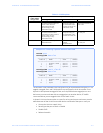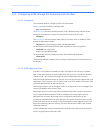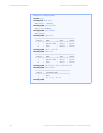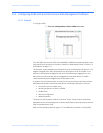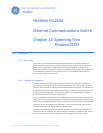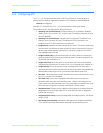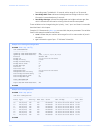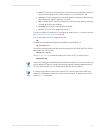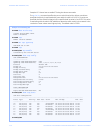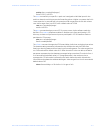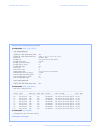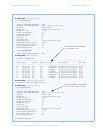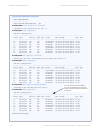
CHAPTER 12: SPANNING TREE PROTOCOL (STP) SPANNING TREE PROTOCOL (STP)
MULTILINK ML2400 ETHERNET COMMUNICATIONS SWITCH – INSTRUCTION MANUAL 12–3
12.2 Configuring STP
The show stp command lists the switch's full STP configuration, including general
settings and port settings, regardless of whether STP is enabled or disabled (default).
show stp <config|ports>
Example 12-1 illustrates the
show stp command with the config parameter.
The variables listed in this example are defined as follows
• Spanning Tree Enabled (Global): Indicates whether STP is enabled or disabled
globally; that is, if the values is YES, all ports have STP enabled. Otherwise, all ports
have STP disabled.
• Spanning Tree Enabled (Ports): Indicates which ports have STP enabled. In the
example, ports 9 through 16 have STP enabled, but STP functionality is not
enabled. As such, STP will not perform on these ports.
• Bridge Priority: Specifies the switch (bridge) priority value. This value is used along
with the switch MAC address to determine which switch in the network is the root
device. Lower values indicate higher priority, and values range from 0 to 65535
with a default value of 32768.
• Bridge Forward Delay: Indicates the duration the switch waits from listening to
learning states and from learning to forwarding states. The value ranges from 4 to
30 seconds, with a default of 15.
• Bridge Hello Time: When the switch is the root device, this is the time between
messages being transmitted. The value is from 1 to 10 seconds, with a default of 2.
• Bridge Max Age: This is the maximum time a message with STP information is
allowed by the switch before the switch discards the information and updates the
address table. Value range from 6 to 40 seconds with default value of 20.
• Root Port: Indicates the port number elected as the root port of the switch. A root
port of "0" indicates STP is disabled.
• Root Path Cost: A path cost is assigned to individual ports for the switch to
determine which ports are the forwarding points. A higher cost indicates more
loops, a lower cost indicates fewer loops. More loops equal more traffic and a tree
which requires a long time to converge - resulting in a slower system.
• Designated Root: Displays the MAC address of the bridge in the network elected or
designated as the root bridge. When STP is not enabled, the switch designates
itself as the root switch.
• Designated Root Priority: Shows the designated root bridge's priority. The default
value is 32768.
• Root Bridge Forward Delay: Indicates the designated root bridge forward delay.
This is the time the switch waits before switching from the listening to the



